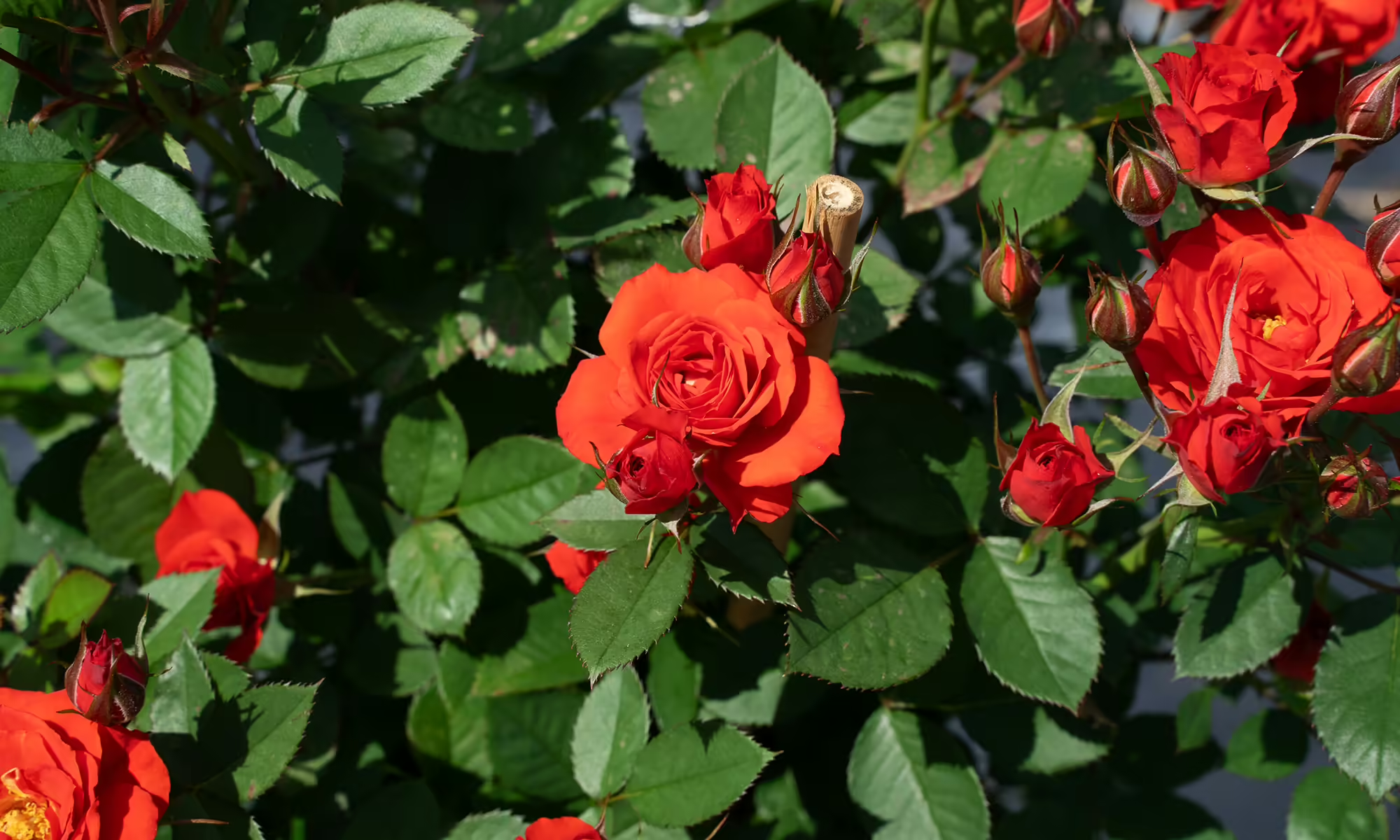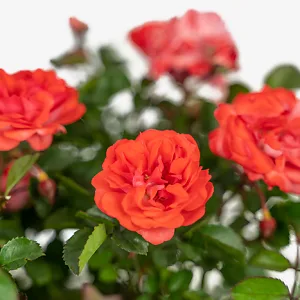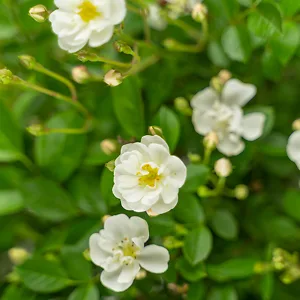
Written by s • Miniature Roses Come to Town
Most gardeners have some idea of the main groups of rose – hybrid teas, floribunda, climbing roses, and so on – even if with new varieties those old borders have become a little blurry. Mostly we see roses are large, colorful flowers with many petals, although some, like some of Knockout and OsoEasy Landscape roses, have open, cup-shaped flowers. There is another distinct group though, that has become neglected. There was a time, not so long ago, when a man, on his way to the tram stop for his morning ride to work, would stop and cut a rose for his jacket’s button-hole. The flower on the lapel was once as essential to getting dressed properly as the handkerchief in the breast pocket would be later.
The boutonnière began in the 16th century, became wildly popular in the 19th, with the Romantic movement, and continued well past the Second World War. Once an item of daily dress and a symbol of elegance, masculinity and honor towards the woman he was with, today they are still worn at weddings, proms and formal events – even if the jackets often lack the secret loop behind the lapel that was there to hold the bloom. Special tiny vases, with a clip, were used too, so that the flower remained fresh all day. These were ornate, and worn on the front of the lapel, or simpler, and concealed behind it. Now that ‘dressing up’ means putting on clean jeans, the fashion has died, except for those very special events. Like everything, it will undoubtedly return one day.
‘What does all this have to do with gardening’, you say? Well, the ever-popular rose was always a top choice for a boutonnière, but most are too large, and easily look just plain silly. So rose aficionados developed varieties with tiny blooms, and the miniature rose was born. Florists stocked them regularly, to refresh a man’s buttonhole when he passed by, and growers needed varieties that kept blooming and blooming, to have a steady supply for sale. Once the fashion died the growing of those varieties – perfect miniature flowers, with tight centers and many petals – declined too, although among rose lovers they always remained a niche interest. Today the most likely place to find them is as a potted plant, but recently their beauty and virtues have been re-discovered by a new generation, and miniature roses are out and about, proving themselves perfect ways to bring color and charm to smaller spaces.
Miniature roses not only have small flowers, between 1 and 2 inches across when fully open, but they are usually small bushes too, growing 12 to 18 inches tall. This makes them ideal for edging beds, but also for growing in pots and planters, bringing rose-growing even to people without a garden, but simply a balcony, terrace or even just a window-sill. A great way to grow them is as standards – that is, attached to a short trunk, so that that are taller, and you can really admire the flowers out in the garden without stooping, or add height to a small space.
Drift Roses
The French rose breeder Meilland have a long tradition of breeding, and the current head of the family, Alain, has done some exciting work breeding from older miniatures. He often used an old classic repeat bloomer, ‘The Fairy’, and mixed it with other varieties. The results are wonderful, with a whole range of exciting plants called Drift Roses. These form billowing mounds about 18 inches tall, and often almost 3 feet across, covered in wave after wave of small blooms, from early summer well into the fall. Shades of coral-pink, red, yellow, white and mixed tones make these plants perfect for edging beds, planting at the top of walls, in planter boxes, window boxes and yes, do cut one for a boutonnière for the prom, or for your great grandfather, who might remember wearing one in his younger days. See the whole range here.
Miniature Rose Trees
If you want to grow your roses in the ground, or in large tubs, then attaching them to stems and making rose trees is a great idea. These Miniature Rose Trees grow about 4 feet tall, but they are only a foot or two wide, so they are perfect for giving height in small spaces, in tubs on the corners of a patio, or perhaps as a pair at the top of steps or framing a door or gate. It is easy to enjoy the full beauty of the miniature blooms. Just like the Drift Roses they bloom continuously, with clusters of small but full blooms all over the bush. Some are more informal and open, but others, such as Cutie Pie, carry perfect but miniature florist roses, which would look wonderful on your jacket for that special evening out.
Miniature Roses in Pots
If you do grow your miniature roses in containers, or any other rose for that matter, it is best to add, if you can, about 20% good garden soil to the potting mix you use for them. Roses are ‘heavy feeders’ and appreciate access to some real soil, as well as benefiting from regular feeding with water-soluble rose foods. Make sure you have good drainage, and water regularly, as soon as the top layer shows some dryness – drought tends to stop roses from blooming, even if they don’t die, so regular watering is important, especially during the summer months.
Caring for Your Miniature Roses
The care for these miniature roses is very much like that of ordinary ones. The new varieties are usually very resistant to those nasty rose diseases black spot and powdery mildew, so they stay clean and fresh, and don’t start shedding leaves in summer. A spray of soapy water will deal with most insect pests when you spot them. Trim back finished blossoms to the first full-sized leaf, and more will quickly return. A harder pruning when they are dormant, removing all the weaker branches and cutting back the stronger ones by about one-third is all it takes. Leave an open framework, and prune to an outward-facing bud if possible. A handful of slow-release fertilizer in spring will set them up for a great season. Enjoy!
***If you want to check the availability of any of the plants mentioned here, go to our Home Page, click on the ‘Search’ button in the upper right, and type in your choice – both common names and botanical ones will work. If, sadly, you find the item sold out, click on the ‘notify me’ box beside the size you want, and you will get an email the moment that plant is available again – it’s easy.







